What Hot Rolled Steel Shapes are Available?
The typical shapes and their sizes and attributes are shown in the respective tables below:
W section steel property table | M section steel property table
| S section steel property table
|
HP section steel property table | C section steel property table
| MC section steel property table
|
L section steel property table | WT section steel property table
| MT section steel property table
|
ST section steel property table | HSS (round) section steel table
| HSS (rect) section steel table
|
Pipe section steel property table | 2L section steel property table
|
![]()
What Sheet Metal Gauges are Available?
Sheet metal gets used in many applications, from forms for concrete pours on structural steel to flashings. The table below illustrates the available gauges for steel, galvanized steel and aluminum sheet metals:
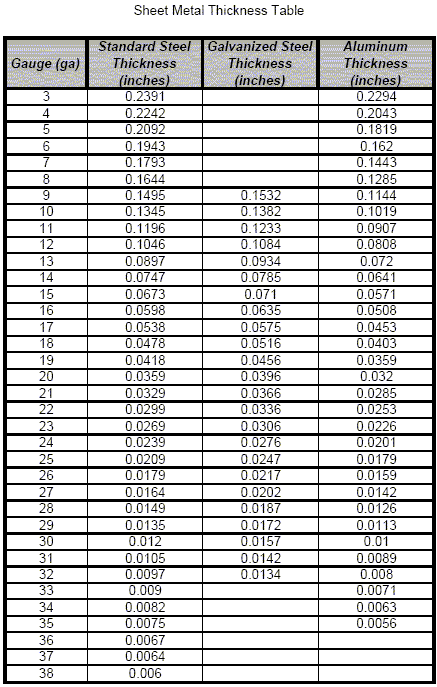
![]()
Why are Connections so Important in Structural Steel?
Most structural steel failures happen at connections....where a beam connects to a column, where a joist connects to a beam, where a hanging rod connects to a beam (the Kansas City Hyatt discussed above). The Structural Engineer must design the design the steel members and give guidelines for the connections. Many people in the Construction Industry don't understand, though, that the Structural Engineer rarely designs the connections.
Why is that? Historically, the Steel Fabricators developed many different ways to make connections. What one Fabricator did in his shop economically might have been quite an expensive way to do it in a competitor's Fabrication Shop. So the practice developed that the Structural Engineer would size the members, but the Steel Fabricators would design the connections, which the Structural Engineer should then review and approve. If you think that seems like a complicated system prone to error, you'd be correct.
But that is the system we generally have in American construction. So the Construction Supervisor should know something about steel connections and have an idea if they are being installed correctly. A bit of background in Basic Structural Design is helpful, but the main thing to understand is the concept of pin connections versus fixed connections.
A beam bolted to a column with clip angles along the beam web likely creates a pin connection. This means that the beam shouldn't be able to move up or down, nor in or out, but it can rotate a bit. A steel column bolted to a concrete pier with four anchor bolts also typically creates a pin connection. Again the steel column won't go up, down or sideways, but it may be able to rotate a bit.
The fixed connection must stop that ability to rotate. So for a beam to have a fixed connection to a column, along with clip angles, there may be a plate on the top and bottom flanges of the beam that gets welded to the column. With all that welding, the beam can no longer rotate. If a steel column is buried four feet deep in a concrete pier, it also would not be rotating at the point that it exits from the concrete. So those are a couple of ways to create fixed (or moment resisting) connections.
The Construction Supervisor should be aware if any fixed (or moment resisting) connections are required and understand how they are to be made. Just asking the questions increases the likelihood of a successful project.
![]()
What is Composite Design?
Composite design marries some of steel and concrete's best attributes together for an efficient structural system. Let's start by thinking about a structural system that isn't composite design. Structural steel beams placed at 4' on center with a steel deck spanning perpendicular which will have 4" of concrete placed on top of the steel deck is not a composite system. That means the steel beams will carry their own weight, the weight of the steel deck and concrete above and whatever live load gets applied. The steel deck and the concrete must carry their own weight and the live load spanning from steel beam to steel beam. Another way to state the proposition: the steel beam acts on its own structurally and the steel deck and concrete act on their own structurally.
A composite system ties together that steel beam and concrete floor and forces them to act as a single structural unit. Some connector on top of the steel beam makes the steel and concrete act as one unit. The steel beam can't slide independently of the concrete slab, the two are bonded together. Since the concrete is strong in compression, the composite system can be quite efficient structurally. The figure below illustrates the concept.
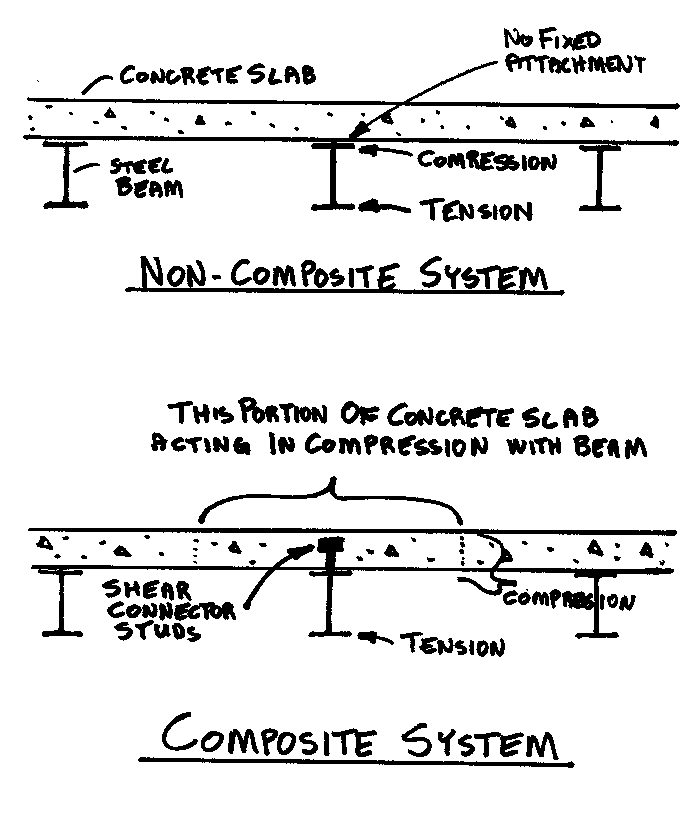
![]()
What Public Domain Documents are Available for Further Study?
A two part Steelworker training course from the US Navy provides a tremendous amount of practical learning. TitledSteelworker Volume #1 at 247 pages and officially named NAVEDTRA 14250. And Steelworker Volume #2 at 417 pages and officially named NAVEDTRA 14251.
The Welding - Design, Procedures and Inspections Handbook produced by the US Dept of Defense provides many details describing water and sitework. The name of this document is UFC 3-320-01A 1 March 2005.
The US Dept of Defense Cold-Formed Load Bearing Steel Systems and Masonry Veneer/Steel Stud Walls is a design handbook that has information regarding steel systems and steel stud walls. The official name of this 148 page handbook is UFC 3-310-07A, 19 June 2006.
Tricks of the Trade & Rules of Thumb for Structural Steel:
- Learn the names of the basic structural steel hot rolled shapes (W, HP, S, C, etc).
- W, S, and M structural steel shapes tell their height and weight in their name (a W8 x 31 is 8" high and weighs 31 pounds per foot).
- Always check if there are fixed (moment resisting) steel connections on the project.
- Always check if a slab above steel beams acts as a composite system.
![]()

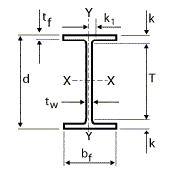
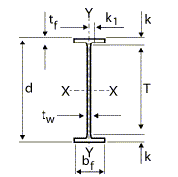
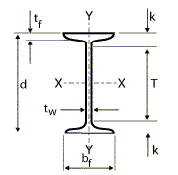
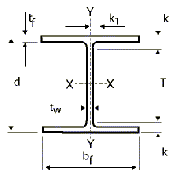
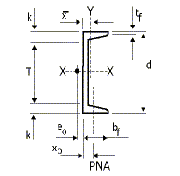
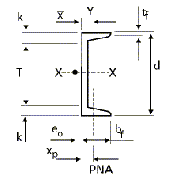
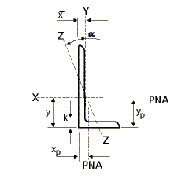
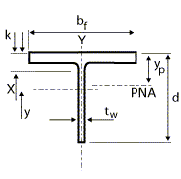
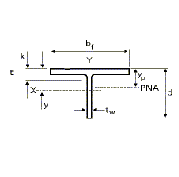
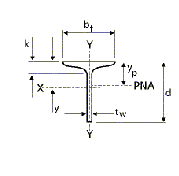
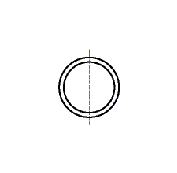
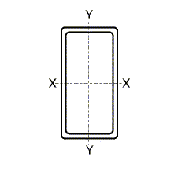
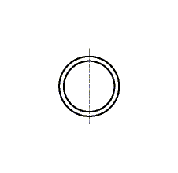
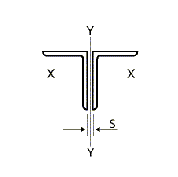
No comments:
Post a Comment